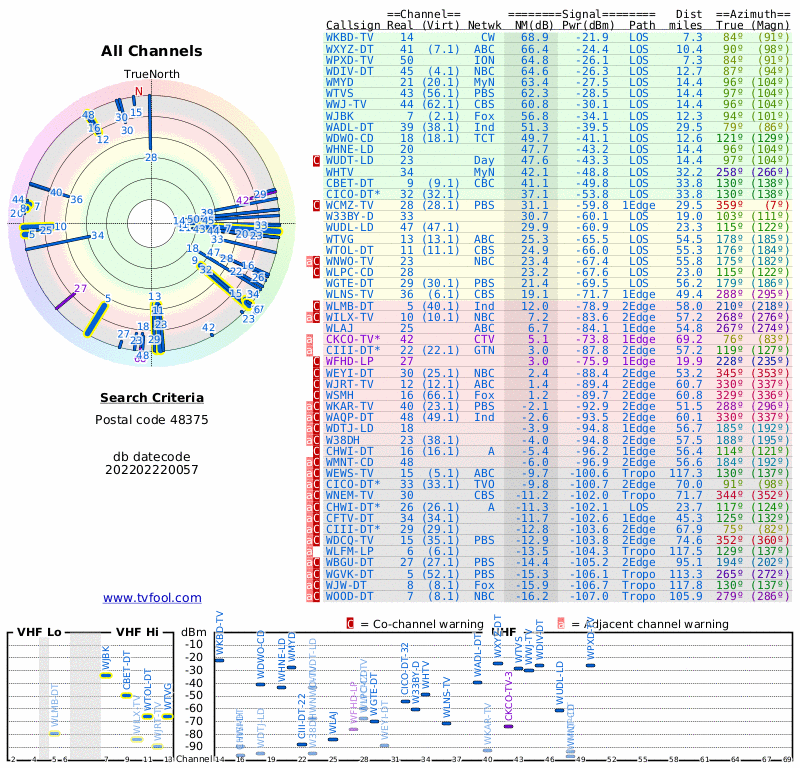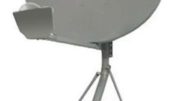When it comes to television, there are full-power stations and low-power stations. Low-power transmitters are used for several reasons. The biggest reason for low-power broadcasting is to cover a very specific area. Sometimes they serve a specific community, or sometimes they are used to rebroadcast signals that can’t reach an area. That second use, as a repeater or “gap-filler,” is likely to increase over time as the industry seems to want to do that rather than increase broadcast power.
But the real question here is, “do you care?” Recently, a very valued commenter to this blog, someone I’ve known of for years, had something to say about this. I published a list of channels broadcasting on VHF-Low, and Kyl commented,
This list only includes the Full Power and Class A stations. It leaves out the numerous LPTV stations that are on VHF lo, many of which have diginets that people might be interested in like MeTV, Decades, Cozi, etc but are stuck on LPTV in their area because the full power stations were taken by other diginets. When you include them nearly every major market in the USA has at least one VHF-lo station.
He’s completely right in that, and I give him credit. But the real question is whether or not you want to justify the higher expense and larger size of a VHF-Low antenna. There’s no “one-size-fits-all” answer, but here’s a way that you can figure out what’s best for you.
Ask yourself…
Are there channels that you want and you aren’t getting? Do you identify as part of a group that’s a little out of the mainstream? Do you speak a language other than English? Is there a large community near you that identifies the same as you?
In a lot of cases, there are TV channels that cater to groups like this. There may be channels with non-English programming out there. You might have channels in your area that offer religious programming or educational programming. There’s a lot of content out there and low-power channels give a budget-friendly way for that to get out to everyone.
Maybe you’re just a “completist.” If you’re the sort of person who just feels like they have to get all the channels in your area, you’ll want to check out all the low-power signals.
How can you find low-power channels in your area?
Luckily, there are a lot of web sites that scour FCC filings and give you a way to know what’s in your area. Personally there are two that I use. I like TVFool because you can get a graphical representation of the stations in your area and where you need to point your antenna to get them. Another site, RabbitEars.info, is incredibly comprehensive and gives a lot more information.
In either case, you can look for low-power stations in your area. Here’s a scan of the Novi, Michigan area from TVFool.

There’s a lot to look at here and I understand it can be confusing. What you want to focus on here is the callsign of the station and its real channel.
Stations that end in -TV or -DT (or have nothing after the first four letters) are full power stations. Stations that end in -LD or -CD or -LP are lower power stations of one sort or another. The stations with the strongest signal in your area are at top, while the weakest ones are at the bottom. Those stations at the bottom of the list may be very powerful, but they are also very distant.
The Real Channel is the actual channel in use. If it’s 2,3,4, or 5, you will need a VHF-Low antenna in order to get them.
But are they important to you?
If you’re interested in a particular channel, a simple google search of its call letters will generally help you get to its web site or to a Wikipedia article about it. That will help you decide if it’s a programming service you really want.
A lot of our Solid Signal customers really don’t want to put up a very large antenna or can’t do so because of HOA requirements. With a little bit of research, you can figure out if you need to take that step.
If you have any questions, call us at 888-233-7563! We’re here during East Coast business hours and we are ready to help!





